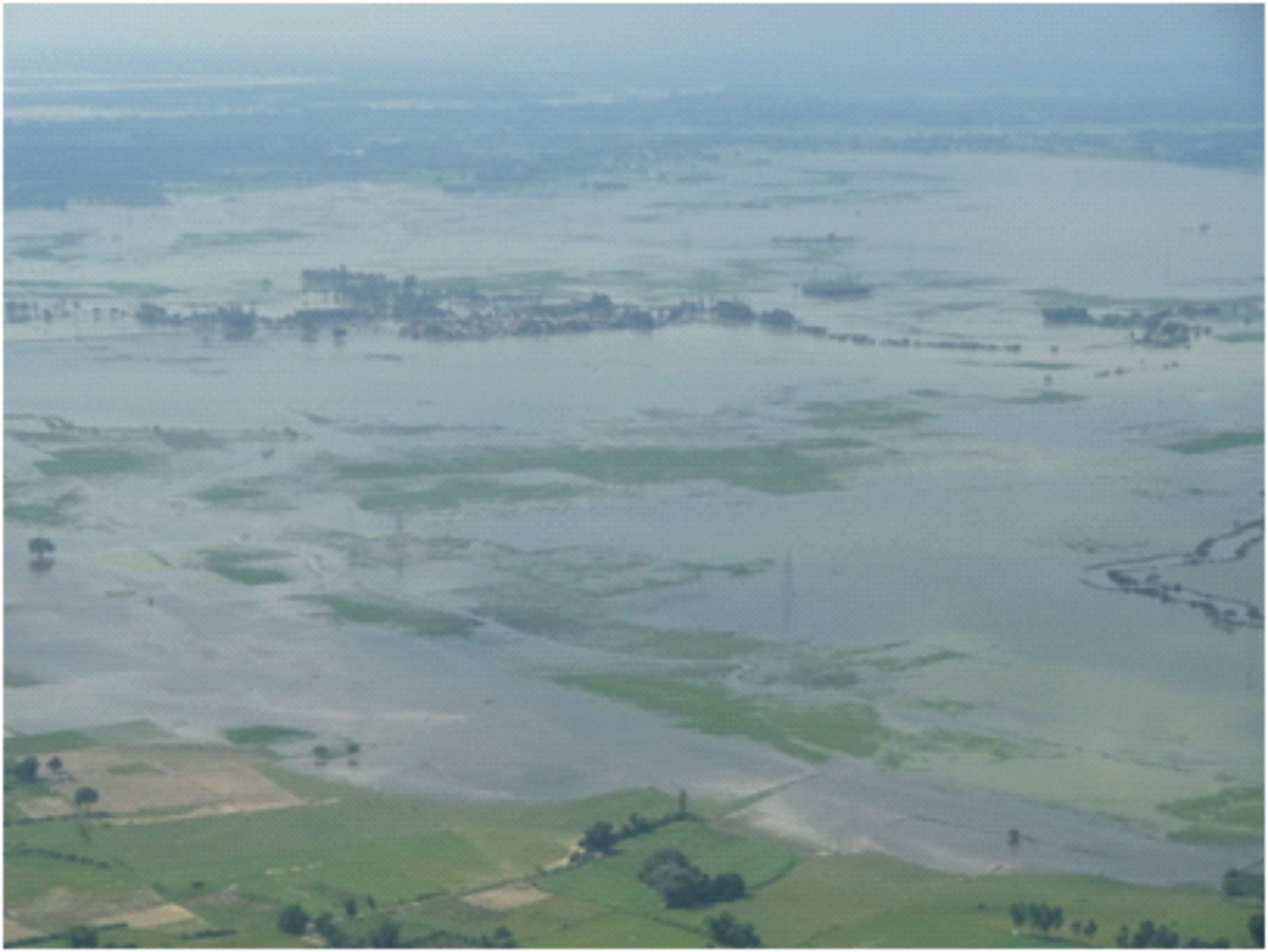Floods
An overview |
Bihar floods |
Odisha floods |
Publications |
Floods are naturally occurring destructive hazards that cause widespread damage to environment, infrastructure, economy, public, agriculture and destruction to human settlements. They have the greatest impact on developed and developing countries. The Asian continent is one of the most prone regions for flood related damages and losses to the physical environment and human population from devastating floods. India is particularly prone to floods and the major flood prone areas cover approximately 13% of its 329 million hectares of geographic area surrounded by the Arabian Sea, Indian Ocean and the Bay of Bengal.
 |
|---|
Floods in Ganga around Kanpur, August 2013
The embankments and drainage channels have traditionally been the most commonly used flood control and flood protection strategies. Flood cushions have also provided in some reservoirs. However, it has been realized that even though flooding could be reduced using these measures, it was never possible to control floods completely. It is also recognized that these measures are not sufficient to provide permanent protection to all flood prone areas for all magnitudes of floods. Providing protection would involve factors as diverse as the topographic limitations of the region as well as financial investment – and would entail prohibitively high cost of construction and maintenance. Although there are significant scientific advancement in flood management, very little of this has percolated down to the policy managers and practicing engineers in India. The knowledge center at IIT Kanpur would facilitate an interaction among the leading river scientists, field engineers and policy managers through consultative workshops. Flooding can happen in many ways. The most common is when rivers or streams overflow their banks. Excessive rain, a ruptured dam or levee, rapid ice melting in the mountains, or even an unfortunately placed beaver dam can overwhelm a river and send it spreading over the adjacent land, called a floodplain. Coastal flooding occurs when a large storm or tsunami causes the sea to surge inland. Most floods take hours or even days to develop, giving residents ample time to prepare or evacuate. Others generate quickly and with little warning. These flash floods can be extremely dangerous, instantly turning a babbling brook into a thundering wall of water and sweeping everything in its path downstream. Moving water has awesome destructive power. When a river overflows its banks or the sea drives inland, structures poorly equipped to withstand the water's strength are no match. Bridges, houses, trees, and cars can be picked up
and carried off. The erosive force of moving water can drag dirt from under a building's foundation, causing it to crack and tumble. Floods are the most common and disastrous natural threats that the world is facing today. They cause more damage and destruction than any other hydro-meteorological phenomenon. Floods can also be caused by anthropogenic activities and human interventions in the natural processes such as increase in settlement areas, population growth and economic assets over low lying plains prone to flooding leading to alterations in the natural drainage and river basin patterns, deforestation and climate change.
The International Decade for Natural Disaster Reduction (IDNDR) was launched by the General Assembly of the United Nations in 1987 to run from 1990 to 2000. Its aim was to reduce the loss of life, property damage and social and economic disruption caused by natural disasters. Floods cause about one third of all deaths, one third of all injuries and one third of all damage from natural disasters. The year 1994 marked the mid-point in the Decade and as a consequence, the United Nations conveyed a World Conference on Natural Disaster Reduction that was held in Yokohama in May of that year. One of the 10 “principles” underlying the Yokohama strategy is that “risk assessment is a required step for the adoption of adequate and successful disaster reduction policies and measures. The effects of natural hazards such as floods can be felt at local levels, affecting communities and neighborhood, or at regional or national levels, affecting entire drainage basins and large sparse of land between states.
